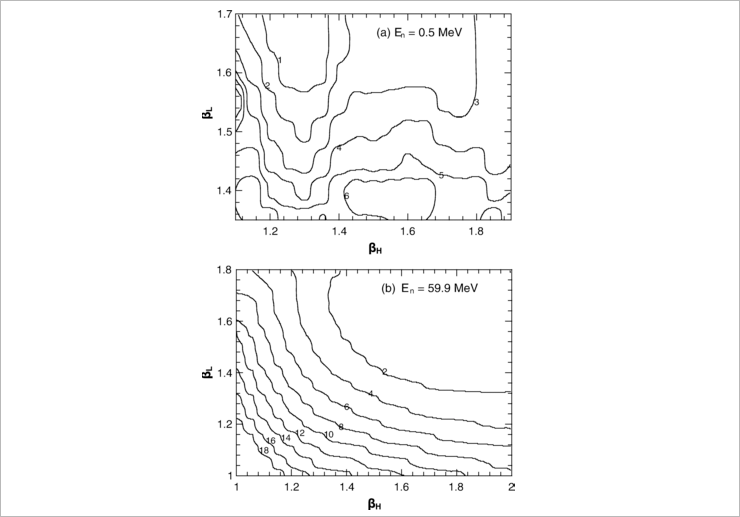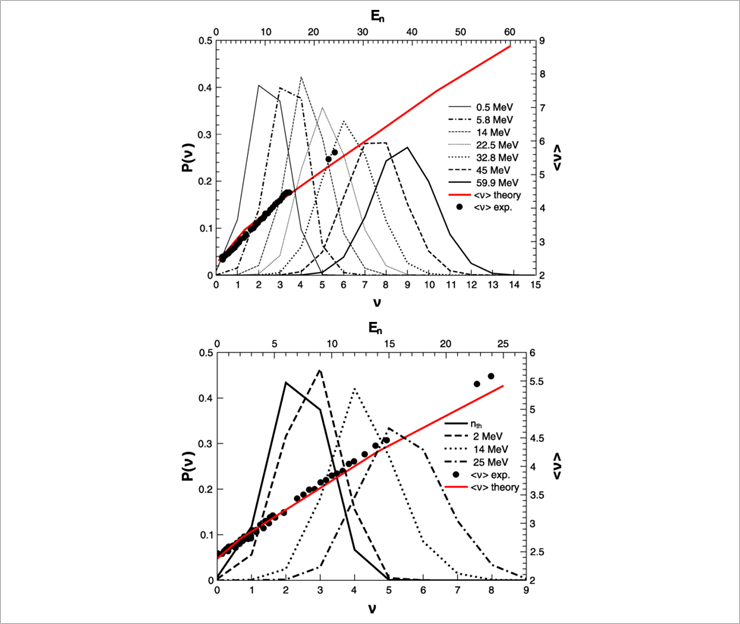Excitation-energy dependence of fission-fragment neutron multiplicity in improved scission-point model
News, 16 September 2024
Scientists from the Laboratory of Theoretical Physics at JINR in collaboration with Babes-Bolyai University (Romania) and Tomsk Polytechnic University studied excitation-energy dependence of fission-fragment neutron multiplicity in the improved scission-point model. The results are published in Physical Review C, an international journal.
 Fig 1. Potential energy surface of the system 99Sr+140Te as function of fragment deformations at different excitation energies.
Fig 1. Potential energy surface of the system 99Sr+140Te as function of fragment deformations at different excitation energies.
For the neutron-induced fission of nuclei 235, 238U, the evolution of the shape of fission-fragment neutron multiplicity distribution with increasing excitation energy is studied within the improved scission-point model. For a wide range of incident neutron energies, the dependence of an average number of neutrons emitted per a fission event on the excitation energy is studied.
With the improved scission-point model the neutron multiplicity distribution from fission fragments in the reactions 238U(n,f) and 235U(n,f) is calculated as a function of the incident neutron energy. The power of the developed model is in simultaneous description of the most of fission observables, namely, neutron multiplicity distribution, mass/charge distributions as well as the kinetic energy distribution of fission fragments. The influence of the “washing out” of shell structure in the fission fragments with increasing excitation energy is demonstrated. The proposed approach gives a good description of fission observables in a wide range of excitation energies and can be applied for predictions in unmeasured energy region.
The authors are scientists of the Joint Institute for Nuclear Research: Alexander Andreev, Gurgen Adamian, Nikolai Antonenko, and Horia Paska.
